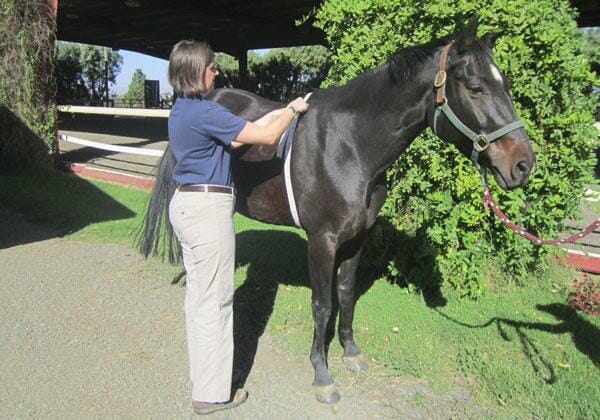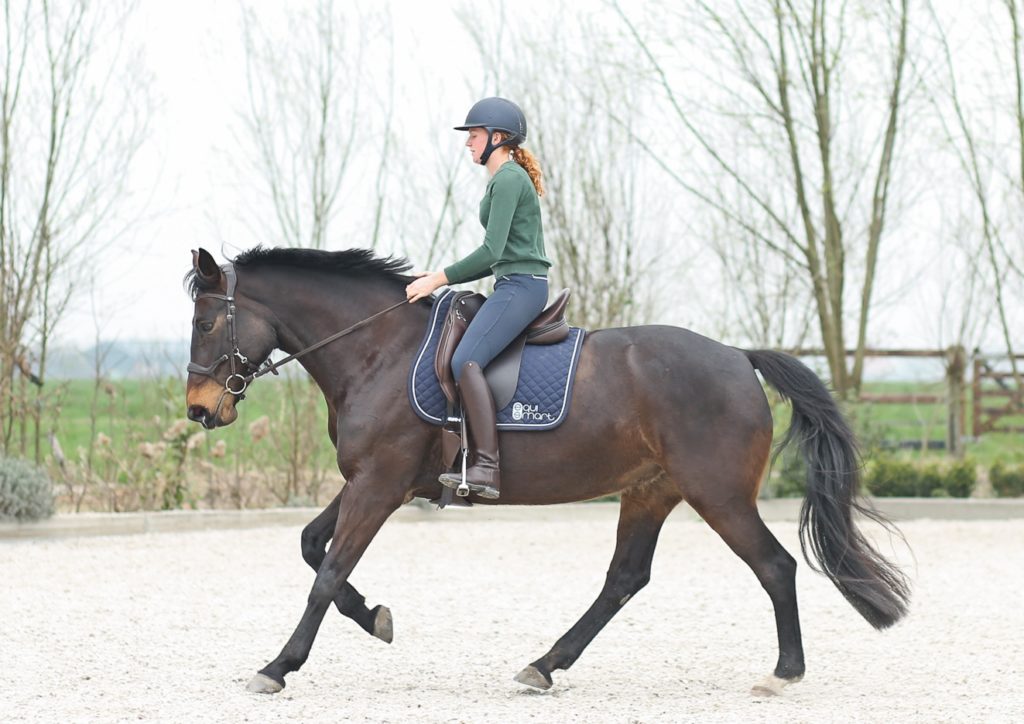WHY YOU SHOULD FEED YOUR HORSE BEFORE WORK
I grew up hearing that you should not feed before work and especially not fast work but when it comes to equine gastric ulcer prevention this is all wrong!

AVOIDING GASTRIC ULCERS
Unlike us, horses constantly secrete stomach acid which sits in the lower portion of the stomach and the cells there are protected from it because they secrete mucin – a substance like snot. However when the horse moves, especially at speed, the acid splashes up and hits the cells in the upper portion. These cells are not supposed to come into contact with gastric acid and therefore do not produce mucin. Not surprisingly it is in this upper portion of the stomach where a good number of gastric ulcers are found.
In a horse that has a good amount of fiber in the diet a nice mat forms on the top of the stomach acid like a raft, think of those natural fiber doormats. This mat helps to reduce the risk of acid reaching the unprotected upper portions of the stomach. The horse’s stomach takes about 6 hours to empty and therefore when access to feed, especially forage, is restricted and the horse has not eaten for several hours the mat is reduced and gastric ulcer risk is increased.
WHAT CAN YOU DO TO REDUCE THE RISK?
First off, ensure that your horse’s diet contains as much roughage as possible. 24 hour access to grazing where realistic is ideal otherwise numerous small meals of long stem forage. If the amount of forage fed is restricted, consider using slow feeders that prolong the length of time your horse takes to eat the same amount of forage. Numerous slow feeder options exist but my clients report that they have good luck with Freedom Feeders and nets made by Cinch Chix which are both affordable options.
If you arrive at the barn to ride and it is apparent that your horse has been without feed for some time I recommend feeding either a couple of pounds of hay in a net or hay pellets while you are grooming. The more your horse has to chew the more saliva is produced and saliva contains bicarbonate which acts as a buffer to stomach acid. So by feeding hay/hay pellets right before you ride, not only are you building that fiber mat you are also neutralizing the existing acid. Feeding the hay or hay pellets dry will stimulate more saliva production.
If your horse is able to have some alfalfa, this would be my first choice of hay to feed in these instances. This is because alfalfa has high calcium and high protein both of which have been shown to act as a buffer. Triple Crown Feeds have a chopped alfalfa product called Alfa-Lox specifically for horses that are at risk of ulcers and feeding it before exercise would be a good choice.
IF YOU LIKED THIS POST, YOU MAY ALSO BE INTERESTED IN THE CONTENT LINKED BELOW:
VIDEO: https://www.equitopiacenter.com/videos/developing-your-horses-topline/
BLOG POST: https://www.equitopiacenter.com/digestive-anatomy-and-physiology-of-the-horse-part-1/
MORE VIDEOS, PODCASTS, WEBINARS AND ARTICLES FOR EQUITOPIA MEMBERS – SIGN UP HERE: https://www.equitopiacenter.com/membership/




